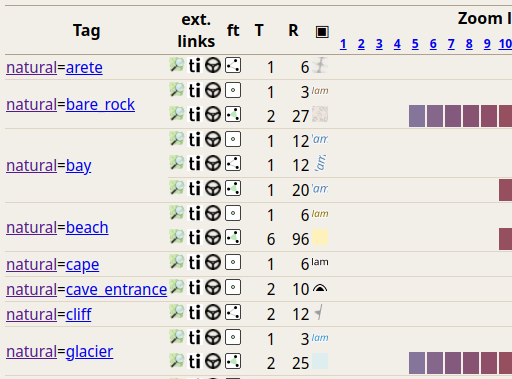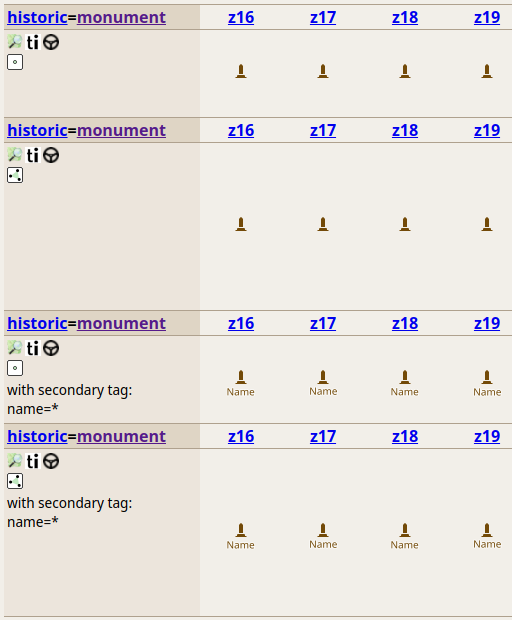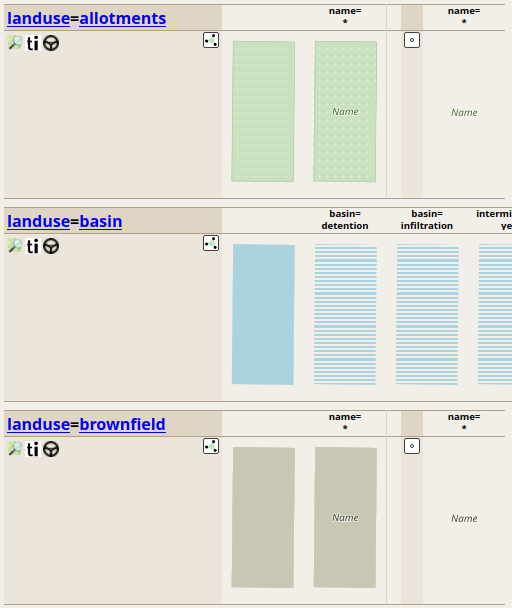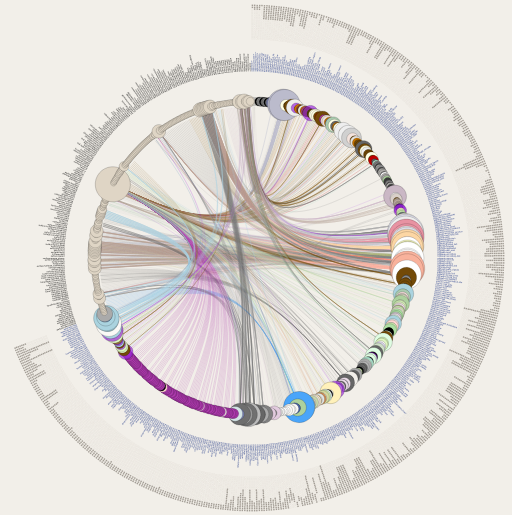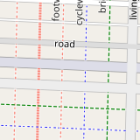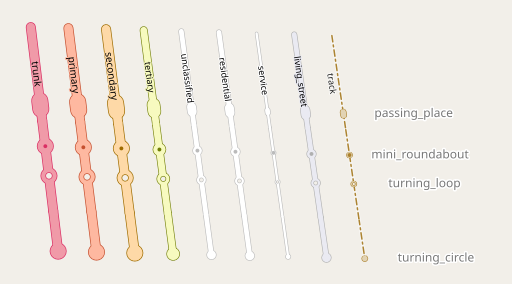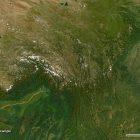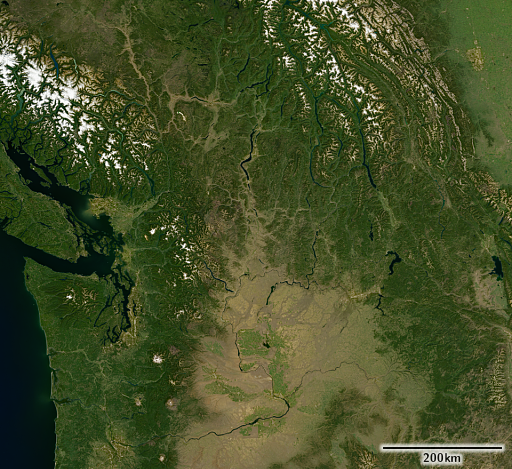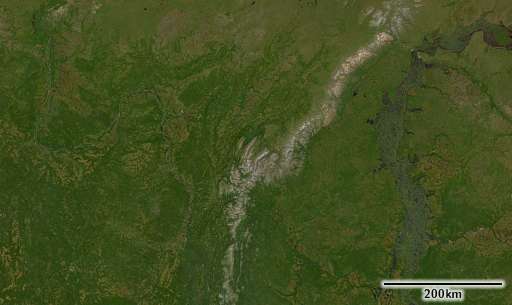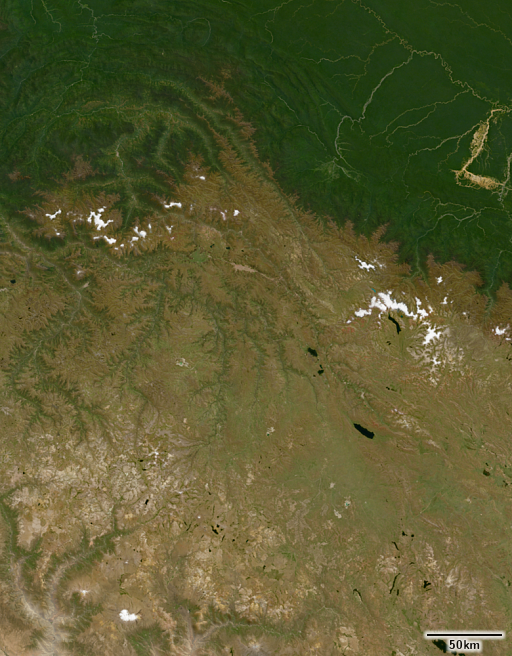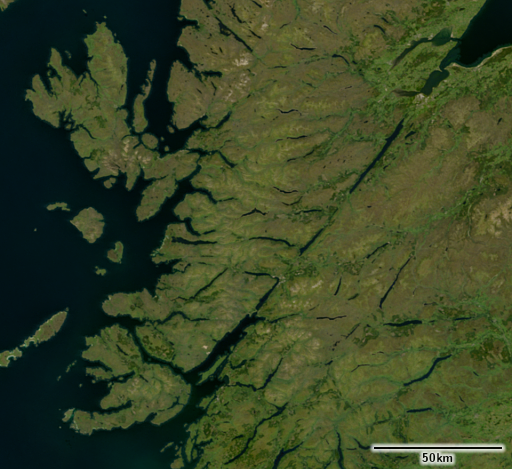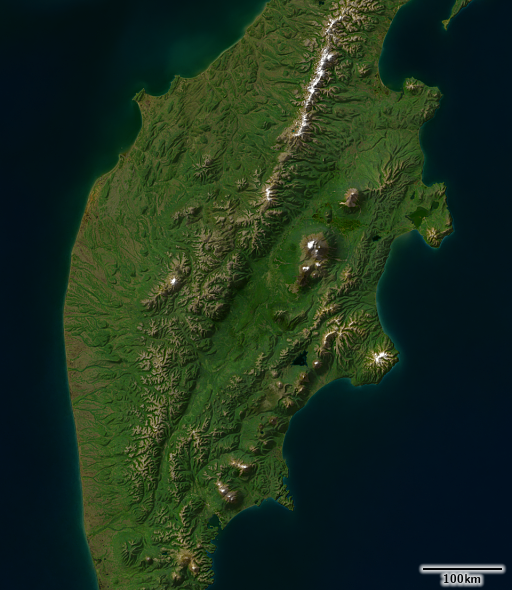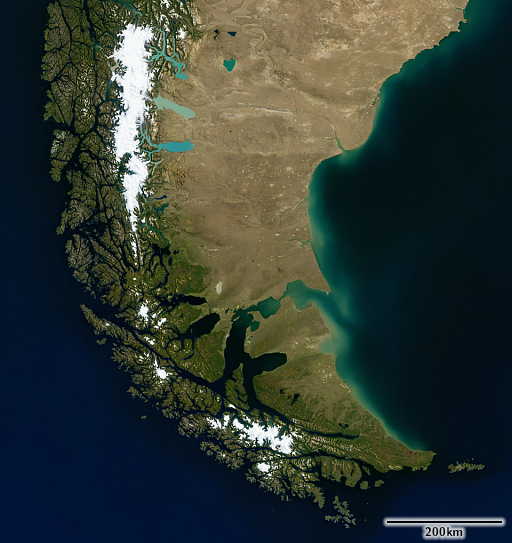We are approaching the end of the year 2022 and that means the annual general meeting of the OpenStreetMap Foundation is coming up and it is time again to look at what happened in the last year and to update my outlook for the future of the organization.
I am – as i indicated previously in other blog posts – increasingly reluctant to write more in depth on OSMF matters. Apart from the increasing commercialization of OSMF politics and the increasing dominance of lobbying in the political deliberation in the OSMF that i have mentioned and discussed many times before, i also feel there is a progressing decline in the extent and the standard of public discourse on OSMF politics. Outside of the commentary i provide and a few sporadic, isolated remarks of individuals on various – often volatile – channels, substantial analysis and open exchange of diverging views and of the arguments behind them has almost completely vanished from the public sphere of communication. I will get to some aspects and consequences of that development in the following discussion of the last year in more detail.
The funny thing is that i of course have my own business interests in the wider context of OpenStreetMap so i imagine i could (and maybe should?) feel at home and among like-minded people in today’s OSMF. But i don’t. I find the whole idea of political lobbying for economic interests both appalling and pointless in the context of a project like OpenStreetMap. The idea that i could use anything but arguments and reason presented in open public discussion (open in particular to be countered and refuted by anyone interested) to influence decisions made within the OSMF to my – direct or indirect – benefit is completely out of the question for me. That applies to both decisions potentially for my direct benefit (i.e. trying to get into the inner circle of people whose work we know and enjoy) and to trying to influence policy decisions in the OSMF in general in a direction that seems likely to be to my benefit.

I like to emphasize that i am not naive in that regard. Of course in the business world arguments and reason are often not the main factors in decisions that are made. My argument against this kind of lobbying is not only on the moral level but also that it is pointless. As i have outlined in my past discussion of the corporate takeover of the OSMF – if the process of making policy and money spending decisions in the OSMF is a matter of (mostly non-public) negotiations of interests rather than an open exchange of arguments and reason, it would be an illusion to believe that a small actor like me (or any SME for that matter) could successfully lobby for interests that do not align fully with those of the big corporate actors with multi-million Euro lobbying budgets at their disposal. In business, you have to pick the battles you can win. And i can hold my ground in an open struggle of arguments and reason even against a multi-billion Euro giant with a lobbying team of a hundred people, but i stand no chance if this is not about who has the best arguments for their ideas but who puts most power behind their interests.
And the question where the OSMF stands on that scale between decision making based on arguments and reason and negotiation of interests is, as usual, a significant part of what i will be looking at and discuss in the following.
Changes in the 2022 board
The past year in the OSMF (and i mean that as the political year of the organization, starting with the annual general meeting (AGM) rather than the calendar year) started with the former board chairperson, Allan Mustard, leaving the board. As i have already indicated in a previous blog post, with Allan departing the last board member with a distinctly non-technical background has left the board. And while this on its own is not such a major event (he was just one of seven board members after all), it marked the conclusion of a long term trend in the OSMF for many years.
I disagreed with Allan on a lot of questions of OSMF politics and i have articulated that disagreement on many occasions – as those of you who regularly read this blog have probably seen. But at least Allan was regularly exposing and presenting his views to the public scrutiny. As a relative outsider, he knew that while he brought in valuable perspectives that were otherwise missing on the board, he also depended on the input of people with more specific inside knowledge to make meaningful decisions, even if that meant listening to people (like for example me) who you fundamentally disagree with on many things.
That openness to actively seek and listen to diverse and diverging views and perspectives is of course only the first step in the process of making good governance decisions. The next one would be to put into question your own views and preconceptions based on the diverse arguments received and to discuss the conflicting ideas broadly and with an open mind to ultimately make good decisions based on balanced reasoning and an open struggle of arguments. This second part, in particular putting into question your own views and preconceptions and to discuss the conflicting ideas broadly, is what – according to what i observed – Allan struggled more with. But, overall and in retrospect, his public communication can be considered a shining light compared to that of the current board members.
The reason why i emphasize this here is that in the upcoming board election and in the process of four new OSMF board members starting their terms that will follow, these abilities could be something that might be good to look at.

What happened in the past year
Overall quite a lot of things have happened in the OSMF during the past year and largely due to the very poor public communication of the board and due to the lack of interest from the OSMF membership, much of this has flown under the radar. The remarkable circumstances of some of the decisions (i will get to some cases in the following) led me to conclude that hardly any of the OSMF members currently feels inclined to do any substantial supervision of the work of the board these days. So a comprehensive writeup of what has happened from an independent outside perspective would be crucial probably. I, however, do not have the time or inclination to really do that so what follows is just a somewhat subjective and sparse cross section.
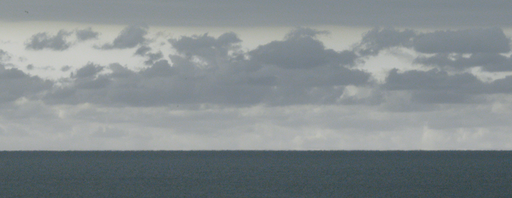
Present throughout the whole year was the never-ending story of takeover protection/membership prerequisites. In short: In the 2020 AGM the membership, on suggestion of the board, passed two resolutions: (a) One mandating the board to work on a set of proposals to require OSMF members to have contributed to the project in some meaningful way before they can be accepted as members and (b) to investigate the risk of paid voting in the OSMF membership and potential measures to safeguard against that possibility. Both resolutions mandated a completion of the tasks within a year.
The board members seemed not to be able to agree on how to proceed on these resolutions so they appointed a special committee on takeover protection to investigate the paid votes and takeover risks. Nothing came out of that committee that was publicly disclosed though. There was apparently a report prepared internally end 2021/early 2022 but no information about that was disclosed to the members.
Before the 2021 AGM, the board realized they can hardly go into the AGM without having in any way acted in substance on the resolutions of the members – which, as mentioned, ironically were originally approved by the members based on the initiative by the board. So they went into the AGM with the promise that there would be an extraordinary general meeting in April when the board wanted to provide a proposal for membership prerequisites for the members to decide on. It was already kind of foreseeable that this would be unlikely to happen and not surprisingly the plans for the April general meeting were cancelled. Now in late 2022 we are in a way in a similar situation as last year, so what the board did in the October board meeting was to rush doing a survey of the OSMF members (so not a binding vote like they had intended for April) about what the members think of the decision the board has already made in June, which however has so far apparently not been implemented. And this is also not what either of the original 2020 resolutions called for – which are proposals to be submitted to the members at an AGM.
This probably sounds to outsiders like i am making this up as a parody – but i am not.

My own take on this: Adding the requirement for a voting member of the OSMF to have shown some interest in and to have gained some at least superficial familiarity with what OpenStreetMap is all about is prudent and 15 lifetime mapping days is a reasonable cutoff for that. But this could have been done a long time ago without making a fuzz and dragging it on taking everyone’s time with repeated votes and surveys for years. If the board wanted to ask the members what they think about this idea then they could have done what they were mandated to do in the 2020 resolutions and make a resolution proposal for the AGM and let them actually decide. Making a non-binding survey about a single policy question a few weeks before the AGM, where they could have presented it as a resolution proposal, is disrespectful and patronizing. By first dragging their feet for two years, then making a decision that is decidedly not what the resolutions called for but not actually implementing it and asking the members instead in a survey what they think about it the board is seriously damaging their relationship with the OSMF members i think.
And no one should for a second believe that such requirement will substantially limit corporate influence on the OSMF.

A rather significant development during the past year was the rollout of the behavior regulation system and of the centralized communication platform. I have commented on both more specifically already. As indicated in previous comments, observing the hierarchical and centralized community management ideas from the OSMF colliding with some of the more diverse and independent parts of the OSM community is rather interesting – though technically challenging because you have to either use the mailing list mode with the broken references (so without any threading as a flat stream of messages) or the inefficient, patronizing, unstructured and poorly readable web interface. While traditional communication infrastructure provided by the OSMF in the past (specifically the forum and mailing lists) have been managed strictly from the bottom in a decentralized fashion, the new platform has been rolled out with a tight centralized management and a community manager paid by HOT. Every local group of people that wants to have their space on the platform needs to undergo a formal procedure under the auspices of this central management before they get accepted and are obliged to continue to abide by the centrally imposed procedures also after that. Despite these constraints, there has been quite a bit of uptake of the new platform by some local communities (including the German one) but it is also visible that quite a lot of filtering out of people happened as a side effect, partly because of the requirement to accept the top-down imposed social norms and procedures, partly because of the lack of a truly self determined way to participate on these channels.
A lot more could be said about what can be observed there these days in terms of social dynamics, but i will leave that for another time.
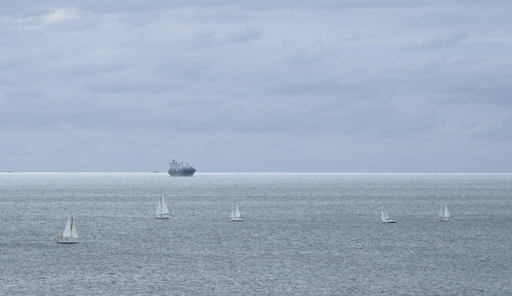
The board has in May started the first board committee that includes non-board members – the fundraising committee. The non-board members selected for that by the board are all Americans – evidently people whose work we know and enjoy of the Fundraising Committee chairperson. The Committee’s scope was later extended to also include budgeting – meaning that the OSMFs finances are now not only externally (through the main financiers of the organization), but also internally, firmly in American hands.

Another thing that happened in the past year was that the OSMF board has gone ahead with hiring their first employee. In doing so the board follows the pattern established with Martin Reifer (contracted as iD developer in 2021) to (a) sign the contract without a formal board decision and (b) to not publish the contract terms. This is remarkable because an employment contract creates substantial obligations for the OSMF as a whole for a longer time. Note the OSMF also has no regular financial auditing with a financial auditor appointed by the members independent of the management. So all of these contracts and long term financial obligations are done without any independent oversight. Apart from that, one of the important side effects is that this hiring decision probably has put an end to the considerations to move the OSMF outside the UK in the future, at least to do so in full (because you can hardly have an employee in a country where you have no legal presence as a business). The whole moving the OSMF idea is one of the things where nothing apparently happened during the past year – which is unfortunate, because as discussed in the past this would have been the chance to implement some really important structural changes in the OSMF that are difficult to impossible under UK corporate law.

Speaking of what has not happened during the last year – there is a long list of such things. And with the OSMF board being volunteers you of course have to be careful to manage expectations here. So i will only pick a few things where the board has in the past put obligations to do things on themselves to then fail to follow these or where these obligations derive from the core of the OSMF mission. The takeover protection/membership prerequisites is already discussed above in more depth.
Not much happened also on the front of implementation of the FOSS policy. The board in late 2021 had asked the FOSS special comittee to do another review of the (mostly unchanged) status quo in 2022. It is unclear if anything happened on that front but it is clear that the main uses of proprietary software and services remains unchanged, in particular the use of Google for Mail (i am kind of curious what would happen by the way if there ever was a board member elected who refuses to get a Google account…).
Nothing of substance has happened on the front of getting HOT to finally obtain a trademark license from the OSMF for use of the OpenStreetMap trademark. There seems to have been a lot of behind the scenes talks but the bottom line seems to be that HOT still refuses to acknowledge the OSMF’s exclusive right to the OpenStreetMap name and their need to license it and that the OSMF board seems to let them get away with that, maybe in exchange for a wad of money.
Equally nothing of substance has happened on the front of making the OSMF corporate members follow the Attribution Guidelines. This has been an open issue at least since the board has adopted the Guidelines in 2021 (prior the argument was: we need to finish the Guidelines first). There was quite a bit of pushing the matter back and forth between the Licensing working group and the board apparently. There have been pushes from the community for the board to finally do something – with no effect so far. This kind of confirmed my assessment from last year that the OSMF is now inherently unable/unwilling to do anything substantially against the interests of its major financiers, even if it is something at the core of the OSM community’s interests.

Also the whole matter of the software dispute resolution panel for the iD editor, that has been boldly introduced in 2020 and that was finalized in early 2021 came to a screeching halt soon after. None of the formal aspects of that panel as it was introduced was subsequently followed by the board and the panel:
- The staggered two year terms of office of the panel members are not followed, the board instead has recently decided (after nearly two years) to summarily extend the terms of all the original members indefinitely.
- No conflict of interest rules have been created for the panel so far.
- No discussion of the panel and the decision to install it with the OSMF membership has happened so far (it was meant to happen after one year).
As a reminder: Originally, when the panel was created, the board had asked the working groups if any of them would be interested in taking over that function, the Data working group had indicated interest, but the board had rejected that and instead decided to create a dedicated panel appointed by them.
I think it is completely understandable that in light of this and of the now completely unclear governing rules of the panel, no other software project decided to opt into being supervised by it.

Something i have already mentioned in the past: The newly created Engineering working group has made a rather promising start developing a fairly elaborate project funding framework during the first part of the year to then start handing out money directly through single tender action without an open call for tender as mandated by the framework.

Final point – and i have left the most remarkable for last – the OSMF board continues to ignore the need for more meaningful anti-corruption rules and oversight. I have discussed the general problem extensively in the past and also more recently pointed out that one of the main problem seems to be the board’s inability recognize their inherent inability to reliably identify and acknowledge their conflicts of interest and appropriately act upon them. But the October non-public mid month meeting from this year moved this to a completely new level. During the meeting a board member declared a conflict of interest on a matter discussed (a funding request by a third party) because the requesting party are “good friends” of his. Then, in the circular following that discussion meant to decide to offer money, he not only participates in the vote, he also casts the deciding vote (4 to 3) in support of the funding request.
In general, anti corruption laws in European countries and the UK tend to be what we in German call toothless tigers. Even the least capable among all corrupt people will usually be able to weasel around these laws and avoid to violate them directly while doing their thing without serious constraints.
I am not claiming any board members to have any bad intention here – yet i cannot help but state that apparently the board managed to run afoul of anti-corruption rules in the most ostentatious way i can think of and none of the board members seems to have seen any problem with that. And if that is the case, how on earth can anyone seriously assume that the practical procedures followed by the board would prevent any substantial and serious corruption from happening?

Some positive things to end with
As in past years, this first part with the analysis of past year’s events in the OSMF is going to be followed by a discussion of trends visible and likely perspectives for the next years. But i don’t want this post to end on such a drastically negative point.
Not everything in the OSMF was bad in the past year. In particular i saw some positive trends in some of the working groups. I already mentioned that the Engineering working group had a fairly good start initially and with some more diligent fiduciary responsibility and oversight the mentioned failure could have been avoided. The irony is that in the current constellation that oversight would have been the responsibility of the board – finally something where the board would have had a good reason to intervene with the work of a working group, but they did not.
I was also impressed that recently the State of the Map working group showed a remarkable amount of backbone towards the board’s attempts to intervene with their work behind the scenes. I had renewed my past criticism of the current concept of the SotM conference this year again and while i don’t know if my comments played a role, it seems that for the specific question of the location of SotM 2023, the working group members discussed in depth their options and the various arguments that should play into that choice, and made the decision that they deemed to be advised by the arguments, despite knowing that it is going to be unpopular among many loud voices – for Cameroon. This would have strongly pointed in the direction of what i had in the past suggested as a possible future concept for international SotM conferences, namely to hook onto different regional conferences in a rotating fashion all over the world with the international visitors coming in as guests visiting an event of regional design, rather than a traveling conference of ‘western’ design moving around the world to places they consider compatible with their style of conference. And when the OSMF board then intervened, they made the prudent decision to not give in and instead said: Either we do it the way we consider to be the right one – or not at all. The lesson to learn from this: You need to accept to step on peoples’ toes if you want to initiate meaningful change on a larger scale. If this bold initiative will carry fruit will of course still remain to be seen in the coming year and i am not too optimistic about that.
And finally, it was nice to observe that the Licensing working group this year has actually started to more actively reach out to OSM data users to provide proper attribution as required under the ODbL. They understandably excluded the big corporate members, some of which fail to properly attribute, from that effort and pushed the responsibility to deal with those to the board – where, as discussed above, it still sits. This is of course highly problematic because it communicates the message: If you are a small OSM data users you have to abide by the license and the OSMF might come after you if you don’t. However, if you are large enough and have paid your dues to the OSMF you get a free pass. That is not the fault of the working group of course. This activity is in particular noteworthy since with the Attribution Guidelines the board back in 2021 had not accepted the LWG draft as is but made substantial modifications to it.
This is the first part of a series of blog posts on this year in the OSMF – see also the second part with some thoughts on this year’s board election and a third part with observations on current trends and outlook.


